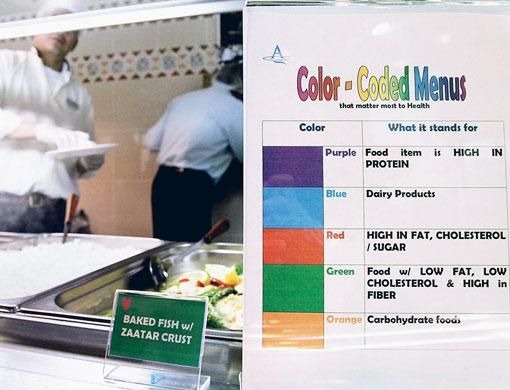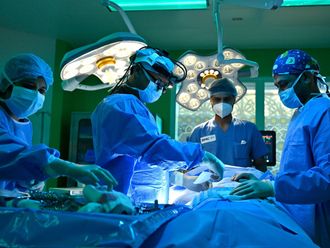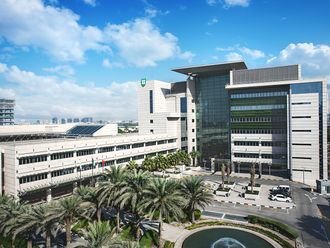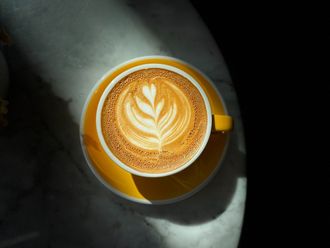Dubai: The Dubai Women's College (DWC) has become the first higher education institution in the UAE to have a colour coding system for cafeteria foods and ban trans fats in food preparation.
Foods such as pasta and rice are colour-coded orange, fruit and vegetables are labelled green, dairy products are labelled blue, chicken, fish or beef is purple and naughty foods such as French fries and hamburgers are labelled red.
Commercially produced potato chips, cookies, chocolates and soda drinks are also banned on campus.
Explaining the rationale behind colour-coding food, Mary Lackie, DWC student affairs supervisor, said: "We live in a country that has the second highest rate of diabetes in the world and ranks high in other health risk factors [such as obesity]."
She added that most of the health problems prevalent in the UAE are linked directly to lifestyle choices concerning eating and exercise. By educating young women, the college hopes to make a difference.
"By teaching them to make healthier choices, they themselves will be healthier and as mothers, they will be educating the next generation of Emiratis about healthy life choices."
Lackie added that if food prices went up, the college tried to raise the price on the least healthy foods to steer students towards the salad bar.
Mariam Saleh, a nutrition manager with the Abela and Co catering company, which runs the DWC cafeterias, said the college recently implemented a five-colour coding system.
The college management had requested that the company stop using trans fats to prepare and implemented a traffic light system in 2006 before the current system was in place.
Menu: Eating right
Orange: This means the food is a good source of carbohydrates and vitamin B. Includes rice, pasta, potatoes and cereals.
Green: This means the food is high in dietary fibre, vitamins and minerals, and low in fat and cholesterol. Includes fruit and vegetables.
Blue: This means the food is high in calcium, vitamin D and protein. Includes dairy products.
Purple: This means the food is high in protein. Includes meat, chicken, fish, pulses and beans.
Red: The food is high in fat cholesterol, sugar and salt. Includes fried food, butter, mayonnaise and candy. They should be consumed in small amounts or occasionally.
Banned items
- Bags of commercially made crisps.
- Sodas and soft drinks.
- Chocolates.
- Commercially baked cookies.
Should schools and universities across the UAE ban trans fats from being served to students? Would such a decision remove your favourite snack from the college canteen? How can students be encouraged to move towards healthier eating habits?
Your comments
It's Good. We can encourage the students to move towords healthy food by giving proper classes and seminars.
Mohammad Sharif
Dubai,UAE
Posted: March 15, 2009, 09:36
The DWC has taken an excellent decision in introducing the colour coding system for cafeteria food. This will create awareness about food and will help children in deciding what they eat. Besides, it is an interesting concept and all college canteens must adopt this idea. Health issues are cropping up way too fast and battling it has become difficult. Sodas, chocolates, food with trans fat etc are easily available and too tempting to avoid. In India all foods are marked with green and brown indicating vegetarian and non-vegetarian. This helps people who do not eat eggs and meat to decide what foods to choose. Eating healthy and making the right choice is possible if options are available. Benefits of health foods and hazards of fatty foods must be displayed in the canteen areas. "Want to be Fat or Fit?" could be advertised with foods listed in columns to allow children to make a choice. Fast food is fattening and is a revolution which needs to be controlled for the benefit of one and all.
Naina Nair
Sharjah,UAE
Posted: March 15, 2009, 08:55












